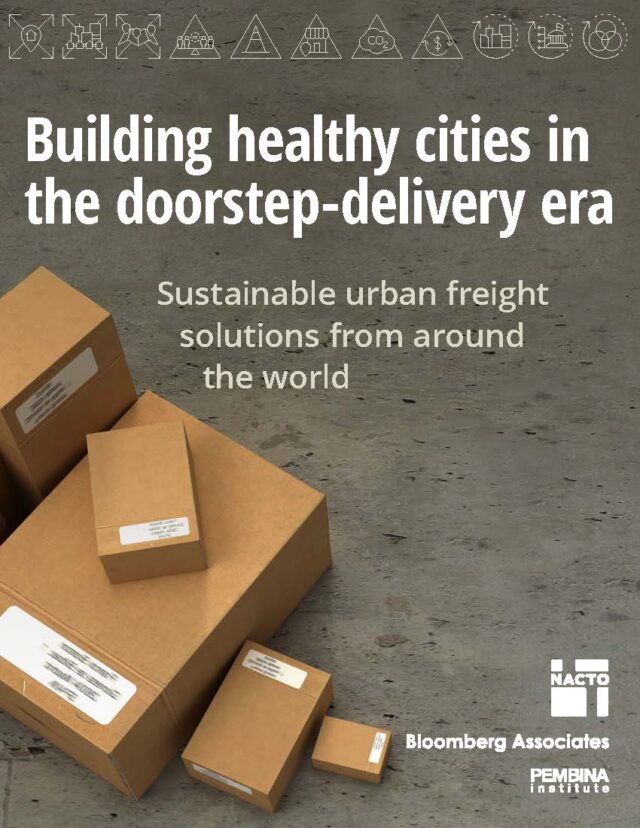 New report in lead-up to Amazon Prime Day highlights cities tackling gridlocked streets, strained delivery services
New report in lead-up to Amazon Prime Day highlights cities tackling gridlocked streets, strained delivery services
NEW YORK CITY — The National Association of City Transportation Officials (NACTO), Bloomberg Associates and the Pembina Institute today released Building Healthy Cities in the Doorstep-Delivery Era: Sustainable urban freight solutions from around the world, a report that identifies the most effective and innovative interventions to reduce and optimize delivery truck traffic in cities across North America as online shopping has surged.
While city residents stayed home in large numbers over the last year, delivery vehicles helped to close the retail gap, bringing billions of packages from warehouse shelves directly to residential doorsteps. These vehicles have also brought consequences of urban delivery in the form of traffic congestion, air quality, and for road safety. The report provides case studies of innovative ideas that have been tested by global cities, including the use of electric delivery vehicles, parcel lockers, low-emission zones and digital support for small business.
“Online shopping has an on-street impact in cities, where sales can be measured in traffic, congestion and the pollution of delivery trucks,” says Janette Sadik-Khan, principal with Bloomberg Associates and NACTO chair. “Cities have more examples than ever to prevent city streets from becoming vast loading zones and must take urgent steps to ward off the gathering delivery deadlock.”
“As cities look beyond emergency and temporary measures to respond to community needs, managing urban freight is primed to be one of the next big challenges on city streets,” says Corinne Kisner, executive director of NACTO. “Managing the increasingly-unsustainable influx of delivery vehicles on city streets will be key to creating vibrant, healthy, and sustainable cities. This report points to concrete ways to untangle the traffic jam of increasingly unsustainable freight traffic while supporting residents and local economies.”
“Managing urban freight isn’t just about the environment, though the carbon footprint of our deliveries is significant. It’s about air quality, road safety, equity and how sustainable our communities are. The solutions to building the cities we want and need are already out there — we just need to scale them up everywhere,” says Carolyn Kim, director of transportation, Pembina Institute
The demonstrated success of pilots and programs bolsters the case for expanding these strategies as local governments create new plans to strengthen cities in recovery from the pandemic. Other case studies showcase emerging, new ideas — such as waterway logistics or e-commerce tax schemes — that represent the bold and creative thinking on urban freight needed to ensure equitable city building.
Quick facts
- The World Economic Forum predicts that an increased demand for e-commerce will result in 26 per cent more delivery vehicles in inner cities by 2030.
- That rise in delivery vehicles is expected to lead to an increase in emissions and traffic congestion of more than 30 per cent in the top 100 global cities by 2030.
- Santa Monica launched the first zero-emission delivery zone in the U.S. earlier in 2021.
- New York City announced council was introducing a comprehensive package of bills in April to curb impacts from urban freight.
- Amazon Prime Day 2021, one of the largest online shopping events in the world, will be held June 21 and 22.
Contact
Eva Salinas
Senior communications lead, Pembina Institute
416-220-8804
Alex Engel
Senior manager, communications, National Association of City Transportation Officials
alex (at) nacto.org